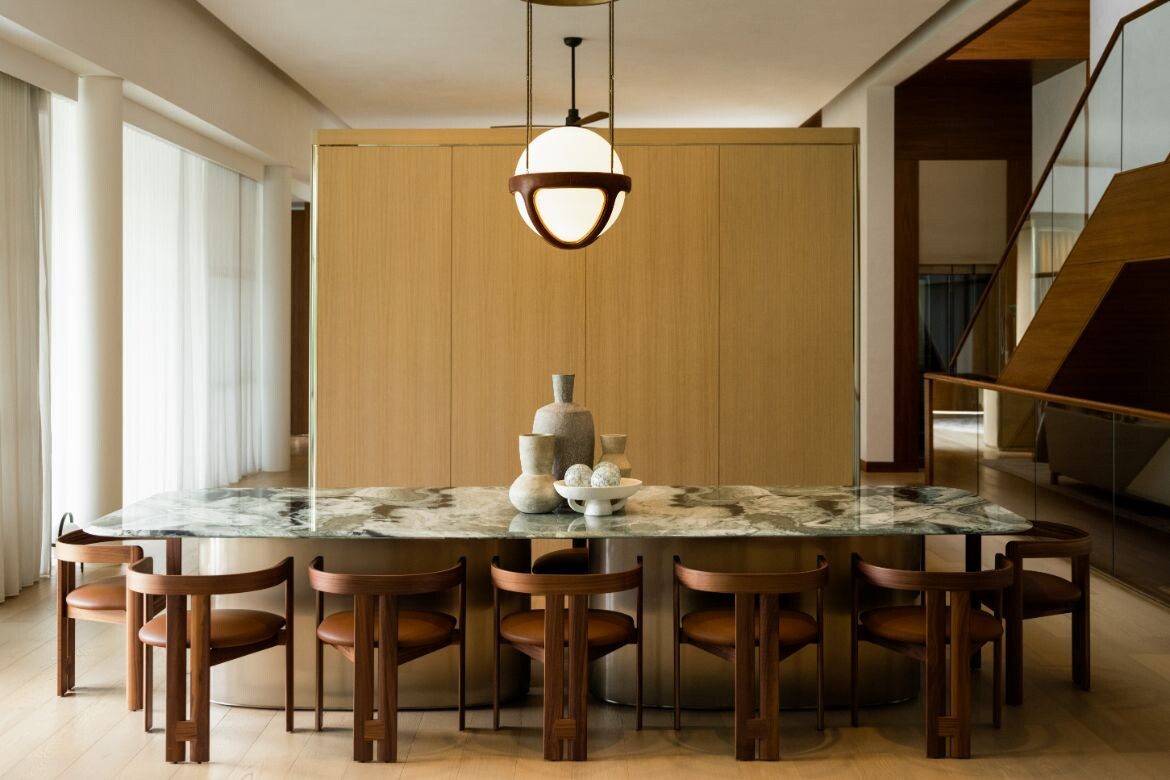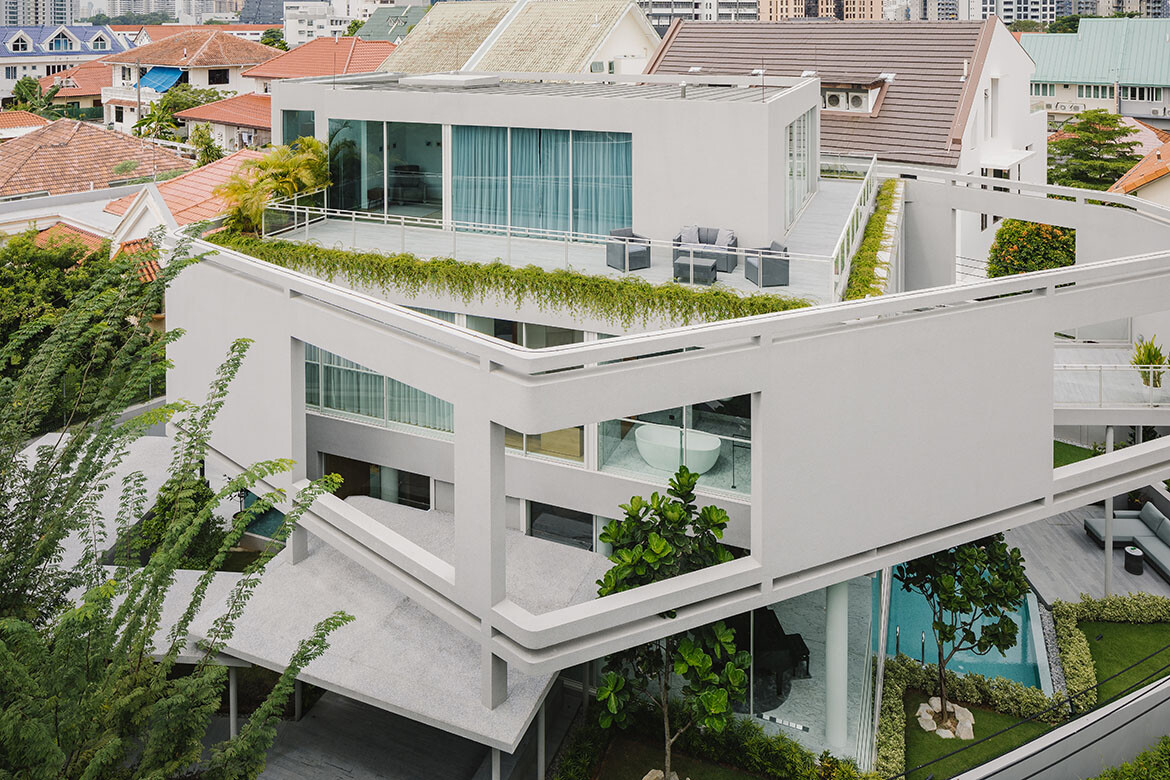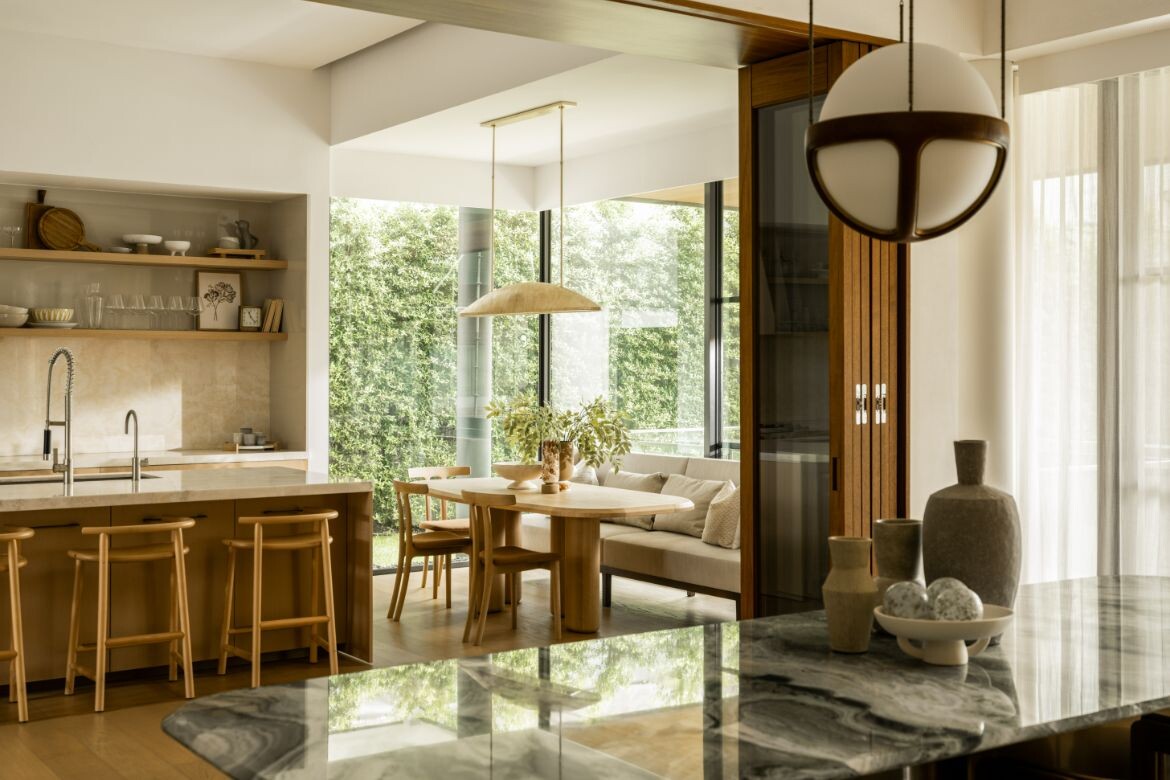Singapore is a city often lauded for its forward-thinking approach across various aspects of life, and design is certainly no exception. Over the years at Habitus, we’ve showcased stories about iconic structures and hidden gems in this southeast Asian centre that consistently surpass expectations. Diving back into the archive, we present a list of stories showcasing some of the best of Singaporean architecture and design.
Brewin Design Office reframed an iconic tropical house
Designed by Ernesto Bedmar Architects, the interior design of this Singapore house elevates the quotidian with artful touches and layered spaces. Founder Robert Cheng, with his background in renowned architectural firms, has divided the generous common areas into intimate spaces defined by bespoke furniture and design features.
The residence boasts expansive windows and travertine walls that exude a stoic elegance to maximise natural light infiltration and foster a seamless connection to indoor-outdoor living. Each space tells a story of slow luxury, from the foyer’s warm tones to the study room’s functional modishness. Custom-designed features such as the timber television console and slide-fold doors blend form and function, creating a home that caters to both familial gatherings and business meetings with equal aplomb.

The redesign of this condo apartment is dark and handsome
This dark and handsome one-bedroom condo apartment is characterised by walnut wood elements and mirrored surfaces, reimagined by Ben Ang from Space Change. The space, once clunky and underutilised, now exudes polish and functionality. Upon entry, an L-shaped built-in cabinet with smoky grey mirrors sets the tone. The once-awkward living room layout has been reconfigured into a seamless entertaining area, while the master suite boasts custom shelving and bay window treatments in matching dark wood veneer. The bathroom features glass fluted doors and an expansive walk-in shower.

Flying Wall House by Park + Associates connects and obscures
Park + Associates’ Flying Wall House in Singapore redefines suburban living for a family of five. Designed to address communal and individual needs, the house features a flying wall element that provides privacy and ample outdoor connections despite its dense surroundings. The light-grey exterior and landscaping offer a backdrop, while the interiors, namely the material palette, meld contrasting textures such as dark quartz with light oak timber. Spatially, the house unfolds in layers, with a sheltered entrance pathway leading to a pool area and pavilion. The second storey features an outdoor terrace wrapped in the flying wall for privacy, while the third storey offers perimeter balconies for the older children to gallivant upon.

Linghao Architects’ renovation allows occupants to live with nature’s vicissitudes
Linghao Architects designed this house, dubbed ‘Every Window a Garden,’ as a bridge between the built environment and the natural landscape – and an exemplifier of how the two can coexist. Designed for university professor Kenneth Paul Tan and musician Clara Lim-Tan, the renovation liberates the space from its compartmentalised past and showcases an open layout that is filled with natural light.
Linghao Architects designed the home upon two core pillars: adaptive reuse and reduction. The house’s reconfigured spatial composition features a green circulation zone with perforated steel surfaces, inviting the outdoors in while fostering a sense of fluidity throughout the interior. By challenging conventional notions of home design and paying attention to the in-between spaces of time and threshold, Linghao Architects has designed a living environment that blends the old and new.

Beige tones and limewash finishes make this a blissful wabi-sabi residence
Oblivion Lab remodelled a maisonette into a homely respite that showcases considered space utilisation with a warm, inviting aesthetic. Interior designer Royston Ho used colour, materials and spatial strategies to his advantage, to imbue the home with a sense of warmth and tranquillity.
Design features inspired by the wabi-sabi philosophy, such as limewash finishes and distressed details, complete the space and enhance the restful feeling. The first level underwent a complete renovation, with walls removed to create an expansive island dining zone and a revamped kitchen area. The living room, now enlarged and privatised, blends indoor and outdoor spaces. Upstairs, the original rooms are repurposed into a guest room, study and main bedroom, each exuding the same serene ambience.

Next up: Five projects making magic with a small apartment space

